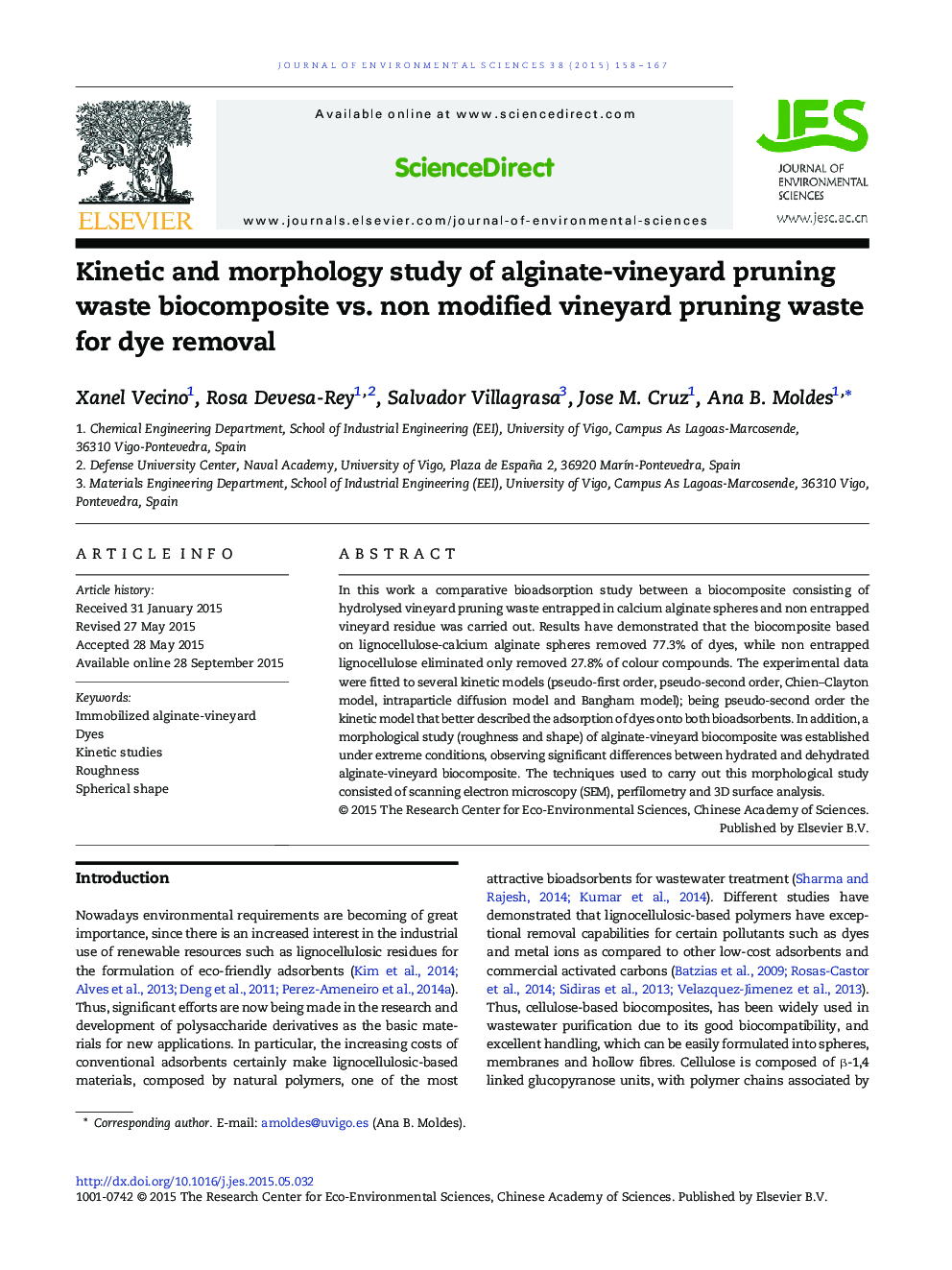| Article ID | Journal | Published Year | Pages | File Type |
|---|---|---|---|---|
| 4453860 | Journal of Environmental Sciences | 2015 | 10 Pages |
In this work a comparative bioadsorption study between a biocomposite consisting of hydrolysed vineyard pruning waste entrapped in calcium alginate spheres and non entrapped vineyard residue was carried out. Results have demonstrated that the biocomposite based on lignocellulose-calcium alginate spheres removed 77.3% of dyes, while non entrapped lignocellulose eliminated only removed 27.8% of colour compounds. The experimental data were fitted to several kinetic models (pseudo-first order, pseudo-second order, Chien–Clayton model, intraparticle diffusion model and Bangham model); being pseudo-second order the kinetic model that better described the adsorption of dyes onto both bioadsorbents. In addition, a morphological study (roughness and shape) of alginate-vineyard biocomposite was established under extreme conditions, observing significant differences between hydrated and dehydrated alginate-vineyard biocomposite. The techniques used to carry out this morphological study consisted of scanning electron microscopy (SEM), perfilometry and 3D surface analysis.
Graphical abstractFigure optionsDownload full-size imageDownload as PowerPoint slide
